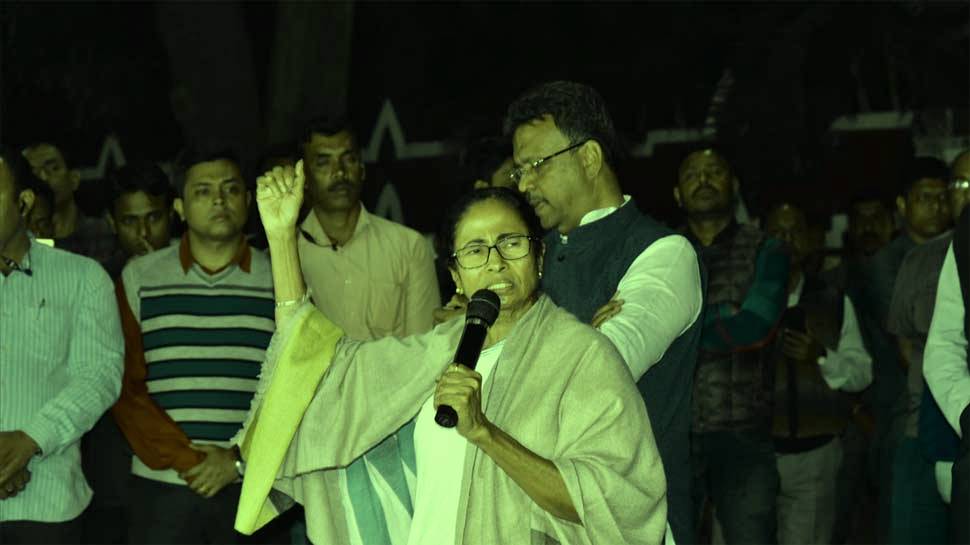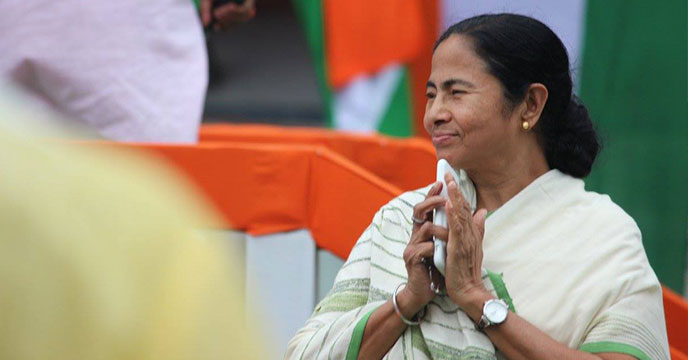SOCIETY
The struggle and hardships of marginalized communities reveal both the story of human suppression and also people’s aspiration to find a meaning in life. The stories like these inspire us to question stereotypes and discover the life stories of those who are secluded and tabooed. The article that follows takes us to the lanes of a sex worker’s colony in Kolkata, and unfolds how they negotiate with life despite its unfair circumstances.
Writaja Sasmal is presently an analyst and editor attached to an energy firm in Mumbai.
 Image Source : Outlook
Image Source : Outlook
Mamata told me about her past, how she landed up in this profession and how her child is growing up in an environment which is marred with daily abuse, crime, drug addiction, extortion, trafficking and lack of access to basic health and sanitation. Her monthly income is spent in paying the room rent, housed in a non-descript building with scrappy wall paint and scrawny pigeons. She and her son Jay share a little room, overwhelmed by a bed, a kitchen nested under it and a TV perched close to the ceiling. A battery of idols is lined up, next to framed photos of Mamata from her wedding day.In 2015, while volunteering for women’s rights NGO in Kolkata, I stumbled upon a young boy in Sonagachi, a sex worker’s colony located in the city’s poor fringes. I was helping translate a donor documentary being made by an international organisation, of the family of two – the boy and his mother, who was a former sex worker and suffers from HIV-AIDS.
A corner is reserved for several trophies and medals that Jay won in many local football tournaments – notably, the boy helped by a local NGO had been to Poland to participate in the Homeless Football Tournament, where he made international friends. A little boat shaped balcony grows out of their room giving a sense of freedom, a daily inspiration to break free. So does the staircase next to their door going all the way to the rooftop – a sense of moving up and above all pettiness. However, the feeling of binding and insecurity returns upon a glance below. As afternoon falls, the narrow street swells up with men and boys. They are either customers or dealers (pimps) of the sex workers. Women and girls queue up patiently; sometimes supply outweighs the demand, especially on lean days. The low-quality, overdone make-up fails to mask their sleepless eyes and starving faces.
The unique quality of Jay is his determination to break out of the fetters of a red light area. While working at a side job to make the ends meet, he concentrates on his sport which he says helps him remain strong. Someday, he plans to rescue his mother from sex work and from the so-called ‘red light area’, a dream shared by many such children. He is like a lotus in the dirt. Even by a casual glance, a sex workers’ colony is by no means sensuous. Instead, it screams of poverty and marginalization, a state in which people have little control over their lives and have limited or no access to basic resources. The popular connotation associated with red light areas used by mainstream media and cultural gatekeepers trivializes the challenges faced by sex workers and their children. My experience attempts to shift the narrative from click bait sensationalism and discuss some of these challenges. First, the lack of early childhood support contributes to insecurity among children. M. Shohel, a researcher on sex workers’ rights in Bangladesh, writes that among all vulnerable groups, sex workers’ children remain most exposed to the risks of trafficking, abuse and HIV transmission. Some of them are separated from their sole parent – the mother – at a young age and sent away to boarding schools or relatives’ houses. The rest grow up in the same rooms that turn into client booths in the evening. Both kinds of children remain vulnerable to psychological trauma and isolation.
Second, the personal and professional growth of these children is constrained by their existence in an identity vacuum. They lack both individual voice and lack of community strength. The red light area being a centre of trade helps exist many elements with vested monetary interests, who sustain the cycle of discrimination and domestic/sexual violence. Testimonies of few others from Sonagachi revealed that mothers prefer marrying off their young daughters in an effort to prevent their inevitable entry into the trade. Sex workers and their children, by default go ‘invisible’ due to the ambiguity of their legal status and entitlements. The risk of bullying and extortion by the police and local authorities keep them from seeking legal counsel. Unlike other minority groups, sex workers comprise of no vote bank and are therefore pushed further down the socio-economic pyramid.
Third, the fear of rejection keeps them from accessing the mainstream society. These children fight not only poverty but also heavy stigma, thanks to the culture of shame attached to the profession. They habitually witness attitudes like, “once a prostitute’s son, always a prostitute’s son”. Shohel’s study revealed that due to the peer victimisation, children of sex
workers find studying in government schools unappealing. There is a widespread belief among these children that for some stems from experience, that they will not be accepted outside their circle due to their ‘objectionable’ background.
Development organizations working in these areas have reflected positive change in various ways such as reducing underage and second generation prostitution; providing psycho-social support and mentorship etc. One of the most important tools of change remains education. Experts recommend pedagogical transformation and experiential learning in order to promote a reflexive thought process among these children. It must be complemented by income-generating vocational/technical training and development of life skills. The challenge of retaining these children in schools can be resolved by promoting an environment where they can express themselves and most importantly, feel safe doing so.
Incorporating psycho-social methods of healing – such as cognitive behavioral therapies (CBTs) and dance movement therapy (DMT) have been useful in helping traumatized children. Education for all is a key enabler of human security – a positive state that sets the platform for exploring greater opportunities. For the children of sex workers, education is directly linked with self confidence, as well as behavioral and habitual changes, observed in terms of new goal setting. The kids I met in Sonagachi were chasing dreams like becoming a footballer, a singer and a lawyer. They were aware of the glaring obstacles in their path but are determined to not return to their mothers’ profession or to the area in general.
By many accords, Mamata and her son’s story is that of thousands of women, children and transgender persons who live with a fundamental crisis of identity in our societies. The silent achievements of the likes of her are indeed another reason to mark International Women’s Day.
Note: All information was collected under strict confidentiality and anonymity and with consent from those interviewed.














